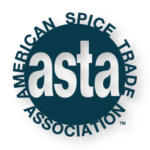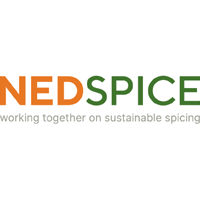
Due to the environments in which they are grown, spices and herbs often harbor microorganisms, including bacteria. These include potential spoilage organisms and pathogens of public health significance. This page includes information about the presence of microbiological hazards on spices and the control and mitigation of these hazards.
Microbiology of Spices
Microbiology of Spices
This downloadable white paper provides background information on the presence of bacteria and other microorganisms in and on spices, information about outbreaks and epidemiology, as well as an overview of the anti-microbial properties associated with spices.
Several of ASTA’s Guidance Documents include relevant information about managing biological hazards in and on spices can be accessed on the Best Practices and Guidance page. In particular, ASTA’s Clean, Safe Spices Guidance Document, Good Manufacturing Practice (GMPs) for Spices, HACCP Guide to Spices, and ASTA Guidance on Environmental Monitoring Programs are great resources.
Salmonella Detection Methods and Laboratory Best Practices for Seasonings, Herbs and Spice Matrices
This white paper is intended to establish best practices when testing for the presence of Salmonella spp. in seasoning blends and spices. The goal is to foster a more consistent approach to Salmonella verification testing of individual herbs and spices, as well as complex seasoning/spice blends, amongst key stakeholders in the supply chain, including secondary suppliers (regional and global).
Webinar Offerings Available on Microbiology
Webinar Series on the Microbiology of Spices
This four-part series explains how spices can be contaminated with pathogens such as Salmonella, the challenges of testing, mitigation strategies and the importance of verification and validation
Developing a FSMA Ready Environmental Monitoring Program
This webinar provides details on FSMA requirements, how to develop a program that is tailored to a spice facility, as well as the legal liability’s companies face related to environmental monitoring.
What Spice Companies Need to Know About the Presence and Control of Spore-forming Bacteria on Spice
Bacillus cereus and Clostridium botulinum are identified as potential hazards for herbs, spices, and seasonings under Appendix I of FDA’s Draft Guidance for Industry: Hazard Analysis and Risk-Based Preventive Controls for Human Food. This presentation includes a discussion on how risks and mitigation strategies differ depending on the end use of spice, herb, and seasoning ingredients.
Validation of Process Controls
ASTA White Paper on Process Validation
The Food Safety Modernization Act requires that all food companies have a food safety plan in place that includes a hazard analysis and validated process controls to control any identified hazards. Potential hazards that may occur on spices include biological hazards, such as Salmonella. Manufacturers of ready-to-eat spices must have a validated process control to ensure that Salmonella is controlled. ASTA’s downloadable white paper on validation provides an overview of essential elements for companies to consider in developing programs to validate the microbial reduction processes they use.
Guidance on Science-Based Groupings to Optimize Validation of Spice Process Controls
This guidance outlines a science-based approach to validating microbial reduction processes for spices that involves conducting a study on a “worse case” representative product of a group of spices.
Webinar Offerings on Validation of Process Controls
Validation of Process Controls Webinar Series
This series provides an in-depth overview of the validation requirements and key elements to consider in the validation study design.
ASTA Online
Installment 7 of this series features a presentation by the Food and Drug Administration on validation studies for spice companies.
Research
ASTA commissions research to support spice company validations.
White Paper on Alternative Microbial Reduction Technologies
This white paper summarizes the publicly available scientific literature on a variety of new and emerging microbial reduction processes for spices and herbs.
Literature Review on Irradiation of Spices
This report consolidates the existing publicly available research on irradiation and identifies the minimum dose of irradiation to control Salmonella in spices, supported by the available evidence.
Evaluation of Antimicrobial Properties on the Surrogate Organism Enterococcus faecium for Validation of Spice Processing Controls
This report summarizes ASTA’s research on the viability of E Faecium as a surrogate organism for Salmonella in spice validation studies.
ILSI Surrogate Irradiation Study 2019
This is a study on surrogate identification for irradiation of spices.





